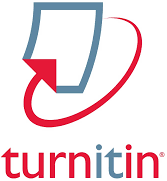THE EFFECT OF GIVING ONION (Allium Sativum) EXTRACT TO TREAT THE SEED OF TILAPIA (Oreochromis Niloticus) BACTERIAL INFECTED Aeromonas hydrophila
DOI:
https://doi.org/10.29303/jfh.v1i2.532Keywords:
garlic, tilapia, Aeromonas hydrophila bacteriaAbstract
MAS disease (Motile Aeromonas Septicemia) is a disease caused by A. hydrophila bacteria that attack tilapia and other freshwater fish species. The use of antibotics and chemicals in the continuous prevention and treatment of this disease can damage the aquatic environment and can cause bacterial resistance to antibotics, so antibotic use becomes ineffective. The study used a Complete RandomIzed Design (RAL) with an experimental method consisting of 5 treatments and 3 repeats. Treatment in this study is (P1) without soaking garlic extract and without infected bacteria Aeromonas hydrophila, (P2) without soaking garlic extract and infected bacteria Aeromonas hydrophila, (P3) soaking garlic extract with a concentration of 1% and disinfection of bacteria Aeromonas hydrophila, (P4) immersion of garlic extract with a concentration of 1.5% and infected bacteria Aeromonas hydrophila, (P5) soaked garlic extract with a concentration of 2% and infected with Aeromonas hydrophila bacteria. The results showed that the SR value of tilapia fish in each treatment had values ranging from 0.0% to 66.7%. Relative percent survival (RPS) tilapia seeds in each treatment have values ranging from 0.0% to 66.7%. The conclusion of this study is that giving garlic extract with different concentrations has a real different influence on survival rates and relative percent survival (RPS).
Downloads
Published
Issue
Section
License
1. The copyright of this journal belongs to the Editorial Board, based on the author's consent, while the moral rights of the publication belong to the author(s).
2. The formal legal aspect of journal accessibility refers to the same Creative Common Attribution + Noncommercial + ShareAlike (CC BY-NC-SA), implying that publication can be used for non-commercial purposes in its original form.
3. Every publication (printed/electronic) is open access for educational, research and library purposes. In addition to the objectives stated above, the editorial board is not responsible for copyright infringement















